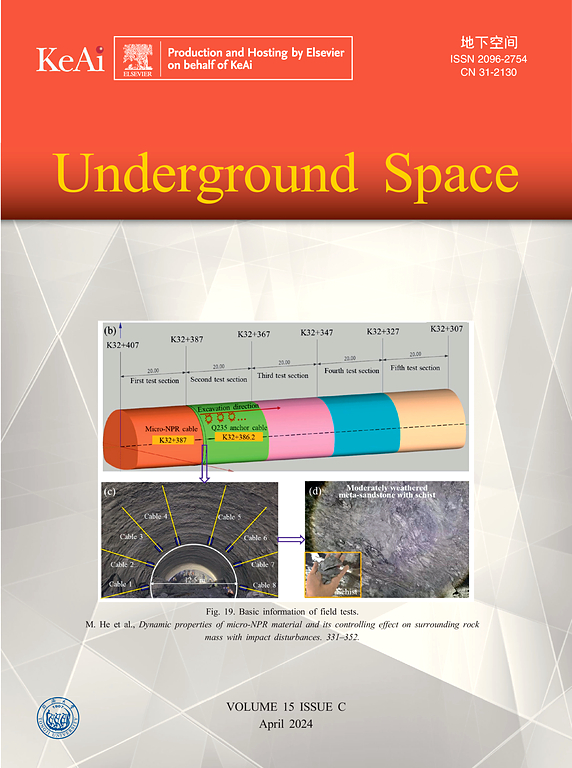管片隧道渗漏致结构倒塌试验研究
IF 8.3
1区 工程技术
Q1 ENGINEERING, CIVIL
引用次数: 0
摘要
在分段隧道施工过程中,突发性渗漏给隧道结构带来了重大的安全隐患,有可能导致隧道坍塌。在世界范围内,盾构隧道施工过程中发生的泄漏事故造成了巨大的损失。然而,现有的研究尚未明确渗漏引起隧道坍塌的机理,难以提出有效的防治措施。为解决这一问题,设计并开展了隧洞渗漏坍塌模型试验。这些试验模拟了隧道坍塌过程,揭示了三个阶段:渗流侵蚀、土洞形成和失稳以及土壤冲击。土洞向上发展,导致隧道外部压力的重新分配。不稳定土洞的土体冲击最终导致隧道结构坍塌。隧道出入口事故与连接通道事故的比较表明,这两种事故类型具有相同的潜在机制,但边界条件不同。本文章由计算机程序翻译,如有差异,请以英文原文为准。
Experimental study on the leakage-induced structural collapse of segmental tunnels
During the construction of segmental tunnels, unexpected leakage poses a significant safety hazard to the tunnel structures, potentially leading to collapse. Worldwide, accidents caused by leakage during the construction of shield tunnels have resulted in substantial losses. However, existing studies have not clearly elucidated the mechanism behind tunnel collapse induced by leakage, making it challenging to propose effective prevention or control measures. To address this issue, a series of model tests on tunnel collapse induced by leakage were designed and conducted. These tests replicated the tunnel collapse process and revealed three stages: seepage erosion, soil cave formation and destabilization, and soil impact. The soil caves develop upward, leading to a redistribution of external pressure on the tunnels. Ultimately, the structural collapse of the tunnel occurs due to soil impact from the unstable soil cave. Comparing tunnel entrance/exit accidents with connecting passage accidents highlights that both accident types share the same underlying mechanism but differ in boundary conditions.
求助全文
通过发布文献求助,成功后即可免费获取论文全文。
去求助
来源期刊

Underground Space
ENGINEERING, CIVIL-
CiteScore
10.20
自引率
14.10%
发文量
71
审稿时长
63 days
期刊介绍:
Underground Space is an open access international journal without article processing charges (APC) committed to serving as a scientific forum for researchers and practitioners in the field of underground engineering. The journal welcomes manuscripts that deal with original theories, methods, technologies, and important applications throughout the life-cycle of underground projects, including planning, design, operation and maintenance, disaster prevention, and demolition. The journal is particularly interested in manuscripts related to the latest development of smart underground engineering from the perspectives of resilience, resources saving, environmental friendliness, humanity, and artificial intelligence. The manuscripts are expected to have significant innovation and potential impact in the field of underground engineering, and should have clear association with or application in underground projects.
 求助内容:
求助内容: 应助结果提醒方式:
应助结果提醒方式:


